My parents often told me that when they left Greece for New Zealand, they were each carrying half a suitcase worth of baggage. This was their way of reminding their children that they should be grateful for what they had, because it was much more than what they themselves had at our age.
But when they left their homeland, they didn’t realize just how much emotional baggage they were carrying with them. It is overwhelming to think how much weight this excess luggage would have amounted to, if it were calculated in real terms: it would have included the Greek language, religion, everyday customs, habits, dress sense, and a host of other non-tangible assets, including, of course, their food traditions. These are some of the things that are transported free-of-charge, and possibly some of the things that early immigration officials in the New World did not take into account when they were assessing the fitness of the newcomers into a country.
Abraham Yiakarmakaki was a local jeweller in Hania, lived in Crete, the island of his birth, until 1923, when he was forced to leave in accordance with the rules that governed the population exchange scheme between Greece and Turkey. He was a Moslem citizen of the Ottoman Empire and his family had been living in Crete since the time of the Ottoman conquest of the island. Before departing Crete, he took his family (half of his children were born in Crete, the other half in Turkey) to the remains of a fortress in Halepa and told them to try to keep the view they saw before them stamped in their mind "lest you forget". He knew that there was little hope that he would ever see his hometown again.
Although he never returned to see his birthplace, those Turkish offspring, along with their children, did manage to visit it, and Abraham's story still survives, being retold by his grand-daughter, Saba Altinsay, in her historical novel Kritimu, which fictionalised the events leading to the departure of her grandparents from the island of Crete. One of the recurrent themes of the story was who had the right to call themselves a true Cretan. We find out that Abraham's name was changed when he arrived in Turkey, in an attempt to wipe out his Hellenic links: 'Yiakarmakaki' was too Greek, so the family name was changed to 'Altinsay', meaning 'gold-measurer', a name related to his work as a jeweller, and he was never again called Abraham (the Turkish equivalent is 'Ibrahim'). When his family arrived in Turkey, they only spoke the Cretan dialect of Greek.
One of the saddest moments in the story was when Abraham realised that there would be no one to visit the graves of his ancestors and his first wife who had died while giving birth to their first child: "Abraham often came [to the cemetery]. He had seen it growing over time and was saddened by this event. But now there would be no more new burials. He was upset to think that the graves would be left alone. They had gotten used to his visits, they would be waiting for him to go and see them. If he could dig them up and take them with him, he would have done so. The living ... would find some way to look after themselves, but the dea - who would be looking after their desolate souls now?" (translated from Turkish to Greek to English)
Saba describes the many sights and sounds of Kanevaro St, a road (still in existence) running parallel to the water's edge in the Venetian harbour of Hania, where the old market area of the town was located in the late 1800s, occupying buildings from the Venetian period (pre-1650):
"Το σφυρί του μπακιρτζή, το καζάνι όπου έβραζε η ζάχαρη του λουκουμιτζή, το σούρσιμο του χαρτιού στου παλαιοβιβλιοπώλη και στου καπνέμπορου, που είχε τις δέσμες με τα τσιγαρόχαρτα, ο ήχος που έκανε το σιτάρι καθώς το άδειαζε ο σιταράς από το ένα τσουβάλι στο άλλο, οι ζυγαριές του λαδά που ζύγιζε το λάδι, το ψαλίδι του τσοχατζή, η λαμαρίνα του φουρνάρη, όλοι αυτοί οι θόρυβοι ενωμένοι κάνανε τον ήχο της Κανεβάρο." (translated from Turkish)
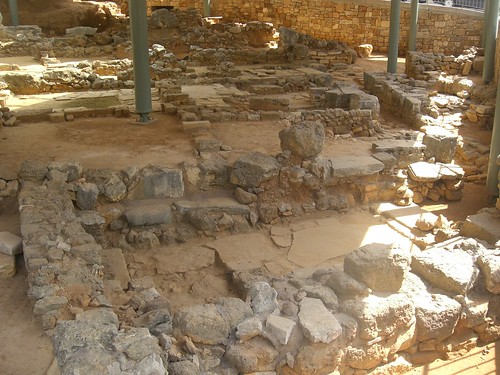
Some of the sights in modern-day Kanevaro St, where the history of the town over a period of 4000 years can still be traced: from the Minoan civilisation (approx. 2000BC) to the Venetian conquest (1300 AD) to the Ottoman period (1700) to modern day Greece (since 1900).
"The hammer of the copperman, the cauldron where the loukoum maker's sugar was boiling, the sweeping sound of the paper at the second-hand bookshop and the tobacconist's, with his bales of cigarette paper, the sound the wheat made as the miller emptied it from one sack into another, the scales of the oil merchant as he weighed the oil, the textile merchant's scissors, the baker's trays, all these sounds together made up the orchestra that played on Kanevaro Street. " (translated from the Greek)
Saba also makes many mentions of the food that her grandfather's family was eating in Crete while they were living here, all of which are still known today:
- ασουρές: asoures - a sweet made with wheat and dried fruits, commonly made by the Moslems during Ramadan, but also known in Greece
- χαλβά: halva - semolina pudding with almonds, made by Moslems for funerals and mourning periods, while Greeks eat this during fasting periods
- αγριοράδικο (dandelion), βραστή μολόχα (mallow), γιαούρτι με μέλι (yoghurt with honey), φρέσκο γιδοτύρι (goat cheese), τσακιστές ελιές (crushed olives), παξιμάδια (rusks) ρακί (Cretan firewater) μυζήθρα (curd cheese), χαρουμπία (carob drink - the last carob drink maker in Hania died a few years ago)
- βρούβες: cooked with eggs and onions - more common greens like kale and spinach can be substituted for this wild green
- μοσχομύριστη κολοτσύθα: ζύμη με λιόλαδο, ανακατεμένη με τυρί και κολοκύθα (deeply aromatic kolotsita: pastry with olive oil, mixed together with cheese and zucchini or pumpkin)
Although it is never called kolotsitha, this kind of courgette-cheese-pastry pie, known in the region as boureki, is made regularly in Hania throughout the summer using the same ingredients mentioned in Kritimu, with the addition of potato; some peoeple make it without pastry, while others cover only the top of the pie with pastry. The bottom of the pie is never lined with pastry. This boureki is not well known outside the region, but it always features on a taverna menu card in Hania. Non-locals often confuse it with other meanings of boureki in Greece, meaning 'cheese pie', which it is in any case, with the addition of the vegetables. At MAICh, the cook often makes individual boureki pies, which look a lot like a tiropita (cheese pie), with the addition of courgettes.
Saba herself solves the mystery of kolotsitha in a recent email to me. Here are her directions:
"You make a base like pizza base. It should be a bit thick (I put one egg while I am preparing it), made with flour, salt, egg and drops of vinegar. Blend them into a dough and lay it onto the tray. Then you slice the kolochitas (courgettes), not rounded, but perpendicular. Put the kolochitas on the base: one layer kolochita and one layer mizithra. It should be better if you do it with a thick goat cheese; make sure the mizithra is not too soft. Don't make more than two layers, otherwise it will be too thick, stay too juicy and won't cook. After you finish your ingredients (mizithra and kolochitas) put some olive oil on top and put it into the oven, with maybe a pinch of black pepper (no other herb), but try to keep it as simple as possible. The top of the kolochita should be open. Do not close like we do in boreki; it should be like a pizza."
Kolotsita was a kind of 'Cretan pizza' made during Ottoman rule on the island, with its foundations based firmly in the culinary traditions of the previous conquerors of Crete, the Venetians. Kolotsitha was the forbearer of the modern boureki. It was made with simple basic ingredients, without too much decor; the key to successful recipes using a simple approach is quality, which is found in the freshness of the ingredients.
When Abraham's family left Hania in 1923, they took their language, food and local customs with them. They were referred to as 'Cretan Turks' in Crete (Τουρκοκρητικοί - Tourkokritikoi), and the descendants of these people are still proud to call themselves Giritli ('Cretan Turks' in Turkish). Turkish cuisine admits that the Giritli have their own culinary traditions, with a heavy basis on the natural environment, featuring wild greens and olive oil, which is what the well-known Cretan (ie Mediterranean diet) is based on.
The political situation which forced the Giritli's emigration from Crete has purged their Greek language skills; very few of their descendants have managed to keep their knowledge of Cretan Greek, for obvious politically motivated reasons (aside from the natural decline of an immigrant community's native language) but there are pockets of Moslem Cretans spread througout the Middle East, notably Syria, who still speak Cretan Greek amongst themselves, although this will be the case generally only in the older generation.

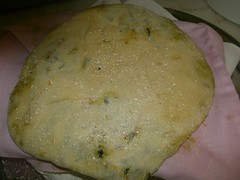
My marathopites look very similar to Nihal's borek (left), while stamnagathi and maroulides are similar to dandelion and often cooked with meat in Crete, just like Butel cooks them.
But the culinary preferences of the Cretan Turks who settled in Turkey on the Mediterranean coast have been maintained to this day. They have also been passed on to other generations, and have spread into the general population. Nihal in the US and Betul in the UK, both from Turkey, cook in a similar way to how I cook in my own home here in Hania. Ibrahim recently sent me photos from Constantinople, showing how his mother's mother and father's father (from Hania and Iraklio, respectively) passed on their culinary traditions to their children (ie his parents), which continue to be maintained even today.
And now you know where the common Turkish surname Giritlioglou comes from, so you know what you are in for when you go to Turkey and decide to eat at a restaurant called Giritli...
©All Rights Reserved/Organically cooked. No part of this blog may be reproduced and/or copied by any means without prior consent from Maria Verivaki.
"You make a base like pizza base. It should be a bit thick (I put one egg while I am preparing it), made with flour, salt, egg and drops of vinegar. Blend them into a dough and lay it onto the tray. Then you slice the kolochitas (courgettes), not rounded, but perpendicular. Put the kolochitas on the base: one layer kolochita and one layer mizithra. It should be better if you do it with a thick goat cheese; make sure the mizithra is not too soft. Don't make more than two layers, otherwise it will be too thick, stay too juicy and won't cook. After you finish your ingredients (mizithra and kolochitas) put some olive oil on top and put it into the oven, with maybe a pinch of black pepper (no other herb), but try to keep it as simple as possible. The top of the kolochita should be open. Do not close like we do in boreki; it should be like a pizza."
Kolotsita was a kind of 'Cretan pizza' made during Ottoman rule on the island, with its foundations based firmly in the culinary traditions of the previous conquerors of Crete, the Venetians. Kolotsitha was the forbearer of the modern boureki. It was made with simple basic ingredients, without too much decor; the key to successful recipes using a simple approach is quality, which is found in the freshness of the ingredients.
*** *** ***
When Abraham's family left Hania in 1923, they took their language, food and local customs with them. They were referred to as 'Cretan Turks' in Crete (Τουρκοκρητικοί - Tourkokritikoi), and the descendants of these people are still proud to call themselves Giritli ('Cretan Turks' in Turkish). Turkish cuisine admits that the Giritli have their own culinary traditions, with a heavy basis on the natural environment, featuring wild greens and olive oil, which is what the well-known Cretan (ie Mediterranean diet) is based on.
The political situation which forced the Giritli's emigration from Crete has purged their Greek language skills; very few of their descendants have managed to keep their knowledge of Cretan Greek, for obvious politically motivated reasons (aside from the natural decline of an immigrant community's native language) but there are pockets of Moslem Cretans spread througout the Middle East, notably Syria, who still speak Cretan Greek amongst themselves, although this will be the case generally only in the older generation.


My marathopites look very similar to Nihal's borek (left), while stamnagathi and maroulides are similar to dandelion and often cooked with meat in Crete, just like Butel cooks them.
But the culinary preferences of the Cretan Turks who settled in Turkey on the Mediterranean coast have been maintained to this day. They have also been passed on to other generations, and have spread into the general population. Nihal in the US and Betul in the UK, both from Turkey, cook in a similar way to how I cook in my own home here in Hania. Ibrahim recently sent me photos from Constantinople, showing how his mother's mother and father's father (from Hania and Iraklio, respectively) passed on their culinary traditions to their children (ie his parents), which continue to be maintained even today.
And now you know where the common Turkish surname Giritlioglou comes from, so you know what you are in for when you go to Turkey and decide to eat at a restaurant called Giritli...
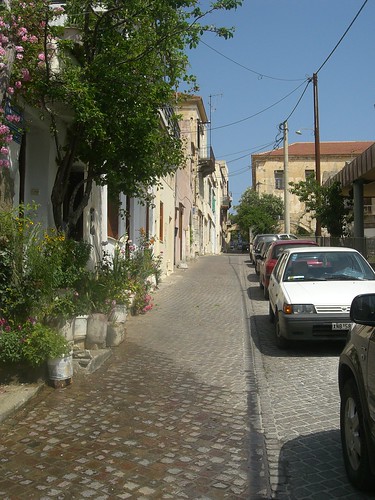
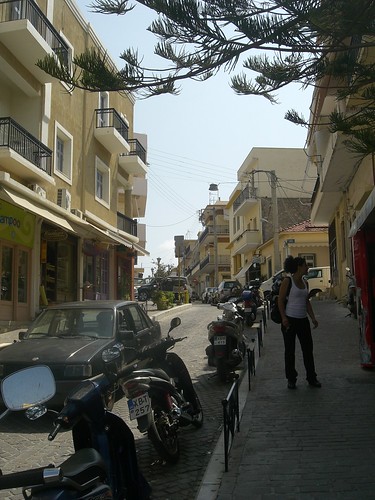


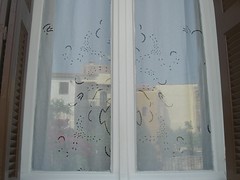

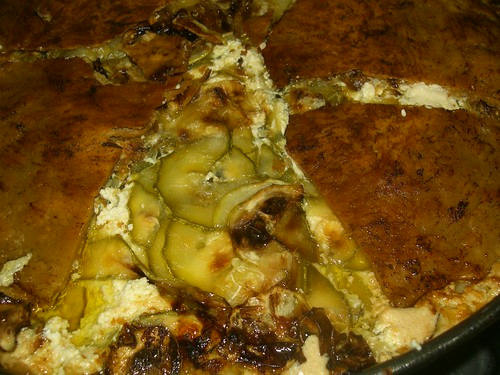
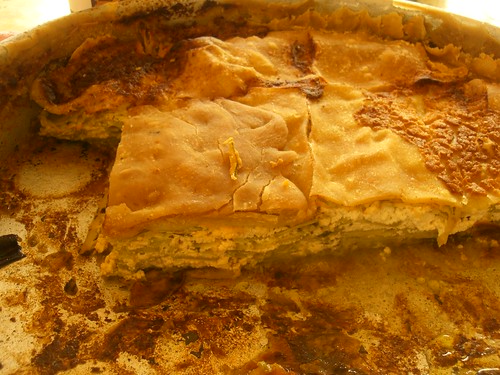

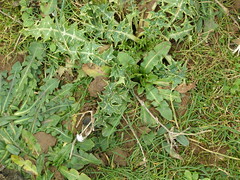
Πρώτη φορά ακούω για κολοτσύθα!!
ReplyDeleteThanks Maria - very interesting...in reading what you wrote about the origin of the word boureki, read somewhere that in fact a lot of the words that we thought were actually of Turkish origin, derived from Greek words in customary usage and because of the 400 years of occupation were Turkified and then Hellenised again...
ReplyDeleteHow interesting that foods still survive in their original form after so many years. I thoroughly enjoyed reading:D
ReplyDeleteGreat story Maria! You are right to say that this is one of the saddest moments in Greek history and I personally find it heartbreaking. All these people losing their homes without a reason at all. At least it is nice to see that history survived through their cooking. Thank you for the lovely recipe too!
ReplyDeleteMaria, similar to you, I like history too (perhaps because of our countries’ past :); although, I try to keep my blog strictly about food, so I do not get the opportunity to write about history. I realize that people from different sides may have a different perspective on things, which is only natural. Unfortunately, there were sad stories like Ibrahim’s both on the Turkish and Greek sides. That is why, unfortunately, a war creates these kinds of circumstances.
ReplyDeleteIt is not surprising that, Ibrahim’s last name was changed to Altınsay since he was a jeweler as you said. During the many reforms that occurred in Turkey, the surname reform that took place in 1934 (along with Turkish women’s right to vote and to hold an office), required every Turk needed a surname that was related to his/her occupation or something he/she was known for to distinguish him/her. I am not surprised that Ibrahim had to adopt a Turkish surname as most countries at that time made similar demands.
The food traditions of Giritli certainly add to Turkish cuisine’s versatility and I am sure the Turkish cuisine had also an influence on Crete cuisine during the Ottoman Empire.
Thanks for posting my börek’s picture! I think it looks better on your blog than mine :)
thanks for the clarification about the turkish surnames - it's added to my understanding of the situation
ReplyDeletei think politics cannot be separated from food. politics is the reason why food is not well distributed to the ones that really need it, politics is why the british can eat fresh pineapple all year round, politics is behind the over-use of corn products in american food, and politics is
also the reason why cretan farmers went up to athens last winter to complain against the treatment of cretan agricultural products when the government decided that they were less worthy of being subsidised than other greek products
politics is why the fattest people are the wealthiest in the world, even though they eat the most unhealthy food, while the leanest people are the poorest ones who often eat the healthiest food
like food junkie, i often wonder how life would have turned out for crete and what a culturally balanced island we would have been if the population exchange allowed the cretan turks to stay on instead of being sent away. the turks stayed on in thrace, and we never hear about social problems among them - they are a part of greece in their own way.
aren't most countries in the world made up of minorities and majorities? being completely mono-ethnic is so unusual, that it creates a narrow perspective among the population on life, the universe and everything...
see my next post for an outlook on the mediterranean diet
Maria, the population exchanges left many emotional scars for both peoples. This story was very interesting and drives home that we are all people with families, children, the elder and memories and that many places in the world are "home".
ReplyDeleteAgain, you feed us with your bounty from the garden, surely delish.
Also, thanks again for the link-luv.
I have such admiration for how you so beautifully weave such personal stories with the broader history of Crete, Greece and the surrounding region. My most recent class was on cultural transitions - how an 'other/outsider' attempts to establish a new life and identity in a wholly different culture. In the past, it has meant complete assimiliation by which the newcomer must give up such important aspects of their old life in order to adapt to and be adopted by the 'in group'. Unfortunately, the need to communicate and be able to express oneself (and be understood) is such a critical component of integration that the native language must often be sacrificed. I'm happy to hear that Cretan Turks have at least managed to maintain their foods and foodways.
ReplyDeleteIt is heartening to know that many societies are now moving toward a multicultural model of immigration rather than complete assimilation - a way to ensure that a monoculture does not develop that smothers the unique contributions of other cultures.
As for the politics of food, I worry that here in the US, the debate focuses primarily on economics and environment (both very important, to be sure) but rarely touches on the importance of the cultural aspects of food. As for the irony of the wealthiest not necessarily being the healthiest, I marvel at how simple foods are often appropriated by 'elites'. The ingredients are made fancier and much more expensive, and we forget that simplicity and value can nourish the body and soul just as well.
This is a wonderful post; it is moving, thought-provoking, and (of course), inspiring. Thanks for teaching me so much about a period unfamiliar to me. And that food looks simply delicious.
ReplyDelete